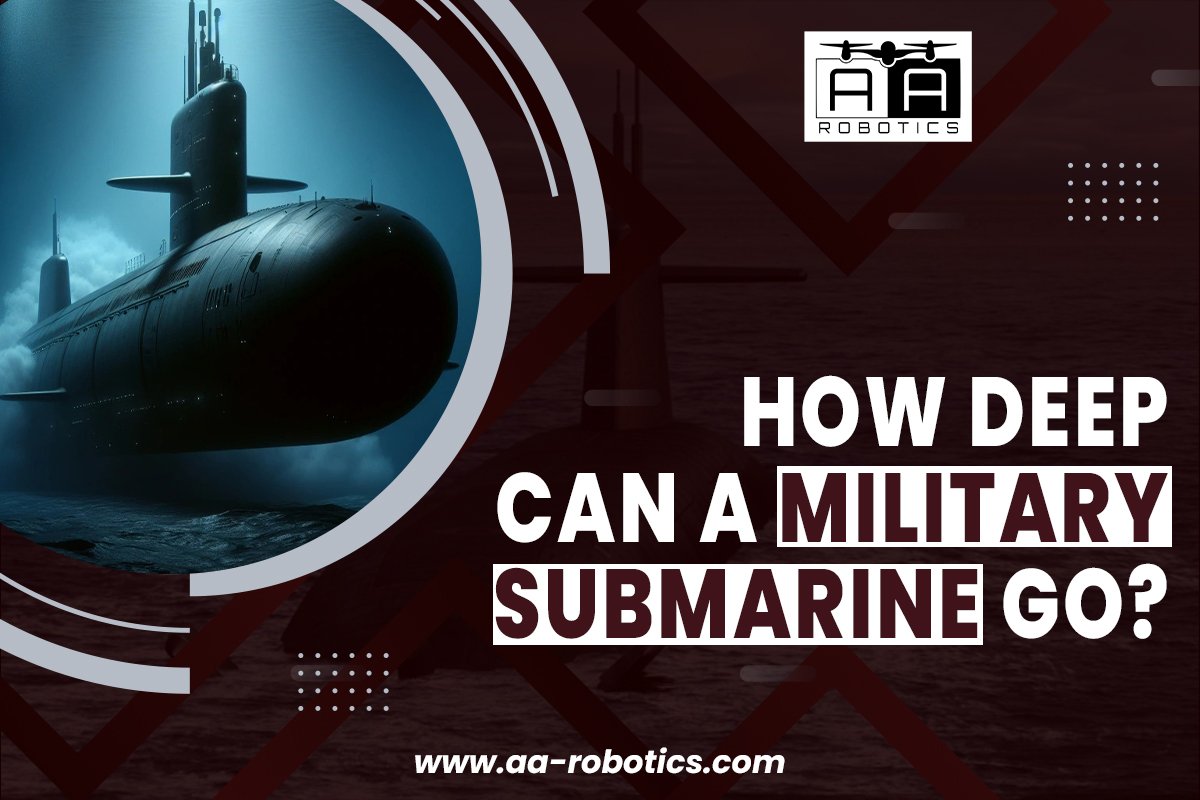
How Deep Can A Military Submarine Go?
Submarines have always been an engineering breakthrough because of their deep ocean capabilities. Submerged craft is of high military war application since it possesses manoeuvrability that was unavailable to other defence assets. The submarine, made with foresight and creativity, is a highly valued resource in today’s maritime strategy. AA Robotics Submarines are the pinnacle of technology, ranging from the deep sea to the silent, undetectable, unseen space.
Understanding Depth Limits Through Design
Design, the material selected, and onboard equipment contribute to the operational depth of any military submarine. AA Robotics describes the subsea design that is always a subject of insistent questioning and scrutiny with regard to the robustness of their hulls, which antedates their fabrication by the use of high-performance steel alloys or of titanium. Such materials are selected very precisely in terms of withstanding a very high water pressure. All submarines are designed at an operating depth that balances together and optimises the safety at one time for the performance in water.
Military reconnaissance heavily depends on submarines operating at optimal depths so as to be able to collect the relevant data as well as to remain discreet. Functional work at these levels requires extremely high-quality engineering and dynamic feedback control of the external environment. Thanks to the use of novel robotics and autonomous systems, the efficiency of submarines has been greatly improved, allowing them to be of great assistance in the scout and reconnaissance mission.
Advanced Robotics Enhancing Submarine Depth

Robotics has changed the military submarine’s capabilities. Autonomous systems of AA Robotics allow submarines or Underwater Robots to dive further and to be stable. They enhance navigation but contribute both to the robustness and survivability of submarines in extreme conditions.
This development will be most beneficial to the military for scouting missions, for example. The underwater hidden operation of submarines, with the possibility of being passive and quiet, can make submarines remain underwater beyond detection. Every one of these is required for marine activity observation, maritime area preservation, as well as for the delivery of defense solutions.
Pressure and Environmental Role
As submarines penetrate deeper, water pressure increases. The fine balance between engineering and natural adaptation determines how deep a submarine can go. Systems of AA Robotics are engineered from the use of sensors that, over time, will track both the structural integrity and the pressure, in order to ensure the submersion stays at safe operating depths.
This capability proves vital during military scouting missions. Adaptive submarine technology can change the submarine’s submarine environment rapidly to maintain its stealth and operational capability. Submarines are still at the cutting edge of the underwater exploration frontier by choosing technical development in an approach that is indeed congruent with the nature of the problems being faced.
Improving Military Scouting with Deep Diving
Scouting is an essential task of submarine operations, and the extent of submarine submersibility is critical to submarine effectiveness. Submarines equipped with sophisticated systems may perform in areas otherwise unavailable for surface craft as well as collect valuable data without being noticed. Such operations are usually performed through manoeuvring in complex underwater landscapes and surveying certain areas, which has been made possible by the development of novel robotic systems.
Thereby, AA Robotics´ achievements in these systems illustrate the corporate commitment to the utility of military submarines. As subs are allowed to go down to deeper waters, new applications for strategic reconnaissance, intelligence collection, and so on, are created.
Ongoing Evolution of Submarine Technology
Future advancements in military submarine technology are constantly under development. AA Robotics is key to the creation of an enhancement solution that will increase its ability to go deeper without risking its safety record. Yet novel lightweight materials, high-performance thrusters, and smart robotic manipulators can pose even more challenges to the deep-sea exploration frontier.
Not only are these advances in favour of performance enhancement of submarines, but they are also in support of submarine’s part in contemporary defence systems. Hence, armed reconnaissance missions can cover areas traditionally not reached, thereby guaranteeing full coverage of the seabed. These developments come about through the integration of robotics and engineering, and submarines are essential to any aspect of military operation.
Conclusion
Warcraft submarines are a culmination of the best technologies in underwater exploration and defense. The Navy’s submarines’ capability to handle a critical depth without a sacrifice embodies the ingenuity of future engineering and robotics. The impact of AA Robotics’ innovations means that submarines are capable of navigating the most demanding environments, opening up crucial advanced military reconnaissance activities.
Despite repeated innovation and commitment to quality, submersibles remain at the edge of underwater engineering. Acting as guardians of future undersea expeditions, they help guarantee maritime strategies are always strong and flexible.
Submarines can achieve great depths according to design.
Advanced materials and robotics facilitate safe diving.
More advanced operations enhance stealth and data collection.
Robotics improves navigation and structural integrity.
Better materials and autonomous systems promise more.


